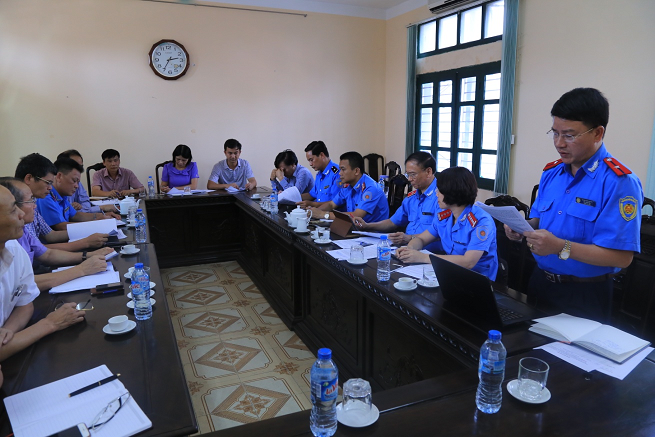Resolution 27-NQ/TW on salary reform policies for officials and public employees, armed forces, and workers in enterprises takes effect from May 21, 2018. After the reform, the salary policy for officials and public employees will have the following major changes:
See also: There will be a separate reward fund for teachers of all levels from 2021

7 major changes in salaries of officials and public employees from 2021 (Illustrative image)
 SALARY TABLE FOR TEACHERS OF ALL LEVELS FROM July 1, 2020
SALARY TABLE FOR TEACHERS OF ALL LEVELS FROM July 1, 2020
1. Salaries of officials and public employees will not be based on the statutory pay rate from 2021
To be specific, according to Section 3.1.c Part II of Resolution 27-NQ/TW, from 2021, the statutory pay rate will be abolished and specific salary levels will be applied to officials and public employees; these specific salary levels will be calculated based on the job position of each individual.
Thus, the salaries of officials and public employees in 2021 will no longer be based on the statutory pay rate as currently applied but will be calculated based on multiple factors, including the average minimum wage of different regions in the business sector.
2. Salaries for officials and public employees will be based on job positions
To be specific, Resolution 27 emphasizes salary reform policies for the public sector, the state will pay salaries to officials and public employees and armed forces based on job positions, titles, and leadership roles, in line with state resources and public service unit revenues, ensuring reasonable equivalence with market labor salaries. For professional and technical salary tables based on official ranks and public employee titles applied uniformly to officials and public employees not holding leadership positions, the implementation will follow these principles:
- Same level of job complexity equates to the same salary;- Higher-than-normal working conditions.
3. New salary system for officials and public employees from 2021
To be specific, according to this Resolution, from 2021, there will be 05 new salary tables for officials and public employees, that is:
- 01 leadership salary table applied to officials and public employees holding leadership positions;- 01 professional and technical salary table based on official ranks and public employee titles applied uniformly to officials and public employees not holding leadership positions.- 03 salary tables for the armed forces, including:
+ 01 salary table for military officers, police officers, and non-commissioned officers (based on positions, titles, and military or rank grades).+ 01 salary table for professional military personnel, police technical specialists.+ 01 salary table for defense and police workers (ensuring the current salary structure equivalence of the armed forces with administrative officials).
Thus, compared to the current salary system under Decree 204/2004/ND-CP, the new salary system will no longer have high-level expert salary tables; professional salary tables for commune, ward, and commune-level town officials; and salary tables for state agency and public service provider employees.
4. New salary structure for officials and public employees from 2021
To be specific, according to Point a Clause 3.1 Part II Resolution 27-NQ/TW, the new salary structure from 2021 will include: Basic salary (accounting for about 70% of the total salary fund) and allowances (accounting for about 30% of the total salary fund). In addition, a reward fund (amounting to about 10% of the total annual salary fund, excluding allowances) will be added.
5. Elimination of seniority allowances for officials and public employees
To be specific, in order to reorganize the current allowance policies, ensuring the total allowance fund accounts for a maximum of 30% of the total salary fund, some types of allowances will be eliminated, such as:
- Seniority allowance (except for the military, police, cryptography to ensure salary balance with officials);- Leadership position allowance (as leadership positions in the political system will have job-based salaries);- Party, union, and socio-political organization work allowances; public service allowances (as they are incorporated into the basic salary);- Hazardous work allowances (as hazardous and dangerous working conditions are incorporated into professional allowances).
Additionally, new regulations on allowance policies according to administrative units' classification at the commune, district, and provincial levels will be issued.
6. Elimination of numerous off-salary expenditures for officials and public employees
To be specific, Section 4 Part III of Resolution 27 clearly states that financial and budgetary solutions are a breakthrough task to create resources for wage policy reform, including the elimination of off-salary expenditures for officials and public employees sourced from the state budget, such as: meeting allowances; allowances for drafting legal documents, proposals; seminars, etc. Implementing the salary fund package tied to the downsizing goal for agencies and units.
7. Officials and public employees in many provinces will also receive additional income
To be specific, under the provisions of Section 3.1.d Part II of Resolution 27/NQ-TW, one of the salary reform contents for officials and public employees and armed forces (public sector) is expanding the pilot mechanism for a number of provinces and centrally-run cities that have balanced their budgets and ensured sufficient resources for wage reform and social security policies to allocate additional average income not exceeding 0.8 times the basic salary fund for officials and public employees under their management.
Currently, additional income allocation is only applied in Ho Chi Minh City. With this reform content, officials and public employees in some centrally-run provinces and cities will also enjoy this additional income in the near future.
In addition, Resolution 27 also sets out some other tasks for wage policy reform, such as:
- Implementing the salary fund package tied to the goal of downsizing for agencies and units.- Expanding the financial package mechanism tied to task performance outcomes.
Nguyen Trinh
 Article table of contents
Article table of contents
![[InfoGraphic] 6 forms of discipline for officials and public employees under Decree 71/2016/ND-CP](https://cdn.lawnet.vn//uploads/NewsThumbnail/2016/07/12/1319291-01.png)







